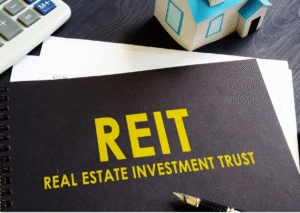What Are Non-Owner-Occupied Refinance Loans?
Non-owner-occupied refinance loans are mortgage products designed specifically for investment properties, real estate that the borrower does not personally live in. These loans allow property investors to restructure existing debt, reduce interest rates, tap into equity, or finance new opportunities while keeping their properties in use as rentals or other income-generating assets.
Unlike traditional owner-occupied loans, these products prioritize property performance over the borrower’s primary residence status. According to the Consumer Financial Protection Bureau, non-owner-occupied loans are generally treated with stricter underwriting criteria, but they also open doors for wealth-building strategies (Consumer Financial Protection Bureau).
Why Are These Loans Important for Real Estate Investors?
Real estate investors often face capital constraints that hinder their ability to expand their portfolios. Refinancing an existing investment property helps address this by:
- Accessing Built-Up Equity: Investors can extract equity from a property and reinvest it into new deals.
- Reducing Monthly Payments: By lowering interest rates, refinancing can free up monthly cash flow.
- Improving Loan Terms: Investors may switch from adjustable-rate to fixed-rate loans or extend loan terms to reduce risk.
- Consolidating Debt: Refinancing may allow consolidation of high-interest debts into one manageable payment.
As Forbes highlights, strategic refinancing is a critical component of long-term real estate growth, especially for those scaling from single-family units to multi-property portfolios (Forbes Real Estate Council).
Who Qualifies for Non-Owner-Occupied Refinance Loans?
Qualifying for these loans generally involves a different set of standards compared to personal home loans. Lenders assess the property’s income potential more than the borrower’s primary income. Common qualifications include:
- Good Credit Score (typically 680+): Shows reliability and reduces perceived risk.
- Low Loan-to-Value (LTV) Ratio: Generally capped around 70%–80% for investment properties.
- Strong Debt-Service Coverage Ratio (DSCR): Demonstrates the property generates enough income to cover loan payments.
- Property Experience or Portfolio Track Record: Seasoned investors may receive more favorable terms.
No Limit Investments, for example, offers investor-friendly underwriting that prioritizes the performance and cash flow of the asset over personal income, which supports faster, more flexible financing.
How Do These Loans Compare to Traditional Refinance Options?
While the general process is similar, several key differences exist between owner-occupied and non-owner-occupied refinance loans:
- Interest Rates: Investment loans usually carry higher interest due to increased risk.
- Down Payment & Equity Requirements: Investors often need more skin in the game.
- Documentation Requirements: More emphasis on rent rolls, leases, and DSCR than W-2 income.
- Underwriting Speed: Some lenders streamline the process for investors who meet specific financial metrics.
For real estate entrepreneurs, working with specialized lenders—like No Limit Investments—can eliminate many of the hurdles of traditional banks by offering flexible documentation and a streamlined application process.
When Is the Right Time to Refinance an Investment Property?
Timing matters in refinancing decisions. Indicators that suggest it might be the right time include:
- Falling Interest Rates: Allows for locking in lower fixed rates.
- Increased Property Value: Boosts available equity to draw from.
- End of Prepayment Penalties: Avoid fees by refinancing after a penalty period ends.
- Better Credit Profile: An improved credit score might yield better loan terms.
Real estate market cycles also play a role. During appreciation periods, refinancing can fuel portfolio expansion. In downturns, it may provide liquidity to stabilize operations.
What Types of Non-Owner-Occupied Refinance Loans Are Available?
Several refinance loan products are designed specifically for real estate investors. At No Limit Investments, some of the key options include:
- DSCR Loans: Focused on the rental income of the property.
- Cash-Out Refinance Loans: Tap into existing equity to reinvest.
- Rate and Term Refinance: Adjust loan structure for better terms.
- Short-Term Rental Loans: Designed for Airbnb or vacation rental properties.
Each loan type serves a different investor goal—whether it’s growth, cash flow optimization, or risk management.
How Can Refinance Loans Help Scale a Portfolio?
These loans can serve as leverage tools that unlock growth potential:
- Enable BRRRR Strategy: Buy, Rehab, Rent, Refinance, Repeat, recycling capital into new acquisitions.
- Fund Property Upgrades: Use refinanced funds to renovate or reposition properties for higher returns.
- Acquire New Properties: Access to cash allows investors to quickly seize opportunities.
- Reduce Total Portfolio Costs: Lower interest or improved terms increase long-term profitability.
Platforms like No Limit Investments offer solutions tailored for this scaling journey, especially for those managing five or more properties.
What Should Investors Watch Out for When Refinancing?
Refinancing isn’t without risk. Important considerations include:
- Closing Costs: Origination fees, appraisals, and legal fees can eat into profits.
- Extended Loan Terms: Lower monthly payments may cost more long-term.
- Market Volatility: Property values can decline post-refinance.
- Prepayment Penalties: Some loans carry fees for paying off early.
Investors must evaluate both short-term gains and long-term impacts. Working with a financing partner like No Limit Investments can help assess deal viability.
What Services Can Support the Refinancing Journey?
Beyond loan products, having the right support system is crucial. No Limit Investments offers:
- Fix & Flip and Buy & Hold Mortgages: For short- and long-term investment goals.
- BRRRR Financing and New Construction Loans: Fuel expansion and ground-up builds.
- Business Credit Facilities: Up to $5 million in flexible lines of credit.
- Credit & Debt Advisory: Strategies to strengthen financial positioning.
- Growth & Development Services: Including investor coaching and business scaling guidance.
These services form an ecosystem for real estate success, especially when paired with strategic refinancing.
Ready to Unlock Capital and Grow? Start with No Limit Investments

Whether you’re a seasoned investor or just starting out, accessing the right financing is the difference between a stalled portfolio and a thriving one. No Limit Investments provides personalized, investor-friendly refinance solutions that help you unlock equity, reduce expenses, and scale your business with confidence.
Get started today at https://nolimitinvestments.net/ and schedule your free consultation.
Final Thoughts
Non-owner-occupied refinance loans are more than just financial tools—they’re strategic levers for real estate growth. When used wisely, they can unlock capital, improve cash flow, and pave the way for long-term success. Paired with expert support like that offered by No Limit Investments, these loans can help investors transform single-property wins into multi-property wealth. As with all financial strategies, informed decision-making and trusted partnerships are key to maximizing value and minimizing risk.
Works Cited
Consumer Financial Protection Bureau. “What is a non-owner-occupied loan?” https://www.consumerfinance.gov/
Forbes Real Estate Council. “How Strategic Refinancing Can Fuel Real Estate Portfolio Growth.” Forbes, https://www.forbes.com/sites/forbesrealestatecouncil/
No Limit Investments. “Services.” https://nolimitinvestments.net/services/
Frequently Asked Questions
1. What is a non-owner-occupied refinance loan?
A non-owner-occupied refinance loan is a mortgage designed for properties that the borrower does not live in—typically rental or investment properties. These loans allow investors to access equity, reduce interest rates, or restructure terms while maintaining the property’s income-generating role.
2. How can refinancing help grow my real estate portfolio?
Refinancing can free up capital by accessing built-up equity, reduce monthly payments through better loan terms, and fund renovations or acquisitions. Strategies like BRRRR (Buy, Rehab, Rent, Refinance, Repeat) rely on refinancing to scale portfolios efficiently.
3. What types of refinance loans are available for investors?
Common options include DSCR loans (based on property income), cash-out refinance loans (to pull equity), rate and term refinance loans (to improve terms), and short-term rental loans (for vacation rentals). These are tailored to investment property strategies.
4. Who qualifies for a non-owner-occupied refinance loan?
Qualifications often include a good credit score (usually 680+), a low loan-to-value ratio, a solid debt-service coverage ratio (DSCR), and in some cases, a proven track record of property management or investment experience.
5. What services does No Limit Investments offer to support refinancing and growth?
No Limit Investments provides investor-focused loans such as Fix & Flip, Buy & Hold, BRRRR financing, and new construction loans. They also offer business credit lines, credit and debt advisory, and strategic coaching to help investors grow and manage their portfolios effectively.







